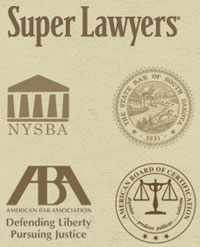A couple of years ago I was invited to speak at the annual Eastern South Dakota Water Conference. I told the audience that when one reviews natural resources oil is fashionable and gold is sexy but the essential natural resource is water.
This article discusses a very recent South Dakota case involving water rights and injunctions. Water disputes can be resolved by the legal remedy of injunction. South Dakota law allows courts to grant a standing and continuous injunction, permanently ordering a party to stop an activity. An injunction is usually used where money won’t do the trick. The harmed or affected party in a water dispute is usually the property owner filing the lawsuit. It is his/her decision to request a particular legal remedy which then sets the legal stage. A claim in water disputes is often in trespass or in nuisance. The requested remedy may be for money damages or for an injunction. Some parties seek both an injunction and money damages – that’s what the party did in the new South Dakota case discussed in this article. It should be stated that an ‘injunction’ is a legal remedy. It is not the legal basis for a claim. The South Dakota Supreme Court politely calls these water dispute incidents drainage events.
The law has requirements in order to obtain a permanent injunction. Certain tests apply. Money must not be sufficient as a remedy, or it must be too difficult to determine how much money would be proper. The case under discussion held that permanent injunctions may only be given if one or more of certain specified conditions exist. If it is possible that a harmed party could calculate relief by the payment of money or that the party could prevent future judicial proceedings without the use of an injunction, a permanent injunction cannot be granted.
The South Dakota case arises out of a dispute between two neighbors over surface water flow. Mr. Magner alleged that the Brinkmans were altering their land in such a way that caused water to flow and pool onto Magner’s land. Magner brought suit, requesting money to repair the damages caused by the water flow as well as an injunction forcing the Brinkmans to reverse changes made that led to the water pooling. In the first part of the trial, the jury awarded Magner money to cover damages that already happened. During the lawsuit, Magner revised his claim to request an injunction ordering the Brinkmans to pay for preventative landscaping on Magner’s land. This landscaping was intended to prevent future damages. After considering this new request, the trial court granted Magner’s late request for an injunction, ordering the Brinkmans to pay money to cover the costs of a landscaping plan.
The Brinkmans appealed this decision, arguing that the lower court erred in granting Magner’s revised injunction. The Supreme Court reversed the trial court. The Court reasoned that the injunction was not statutorily authorized – therefore it could not be granted. Magner said that he could use a specific amount of money to prevent future damages. The Court found this to be a case where money relief would be sufficient both to prevent future lawsuits and to make Magner whole. In addition the amount of money was easily determined in the case – the harmed party had proposed a specific dollar amount. The fact that Magner could request an amount of money that would solve the problem and prevent future injury defeated the request for an injunction. The Court said that the Plaintiff’s money damage request as a part of its future damages claim shows that harm to the property could be “easily measured in (money) damages.” In other words, if the harmed party shows his loss in terms of dollars, he is stuck with ‘dollars’ as his remedy.
The American court system, reflecting society, has a predilection for using money damages as a preferred remedy for resolving legal disputes. The preference for requesting money damages is a mistake when a party is considering his legal options in efforts to protect the integrity and value of property while that property sits in harm’s way. How can one translate into ‘money damages’ a future harm to one’s real estate that is imminent and immediate but that has not yet occurred? Further, how can one accurately predict a ‘dollar equivalent’ to property damaged by water flow? The takeaway: if you are the harmed party in a water dispute, think carefully of the remedy you request. Money is fleeting.
David Ganje practices law in the area of natural resources, environmental and commercial law.





